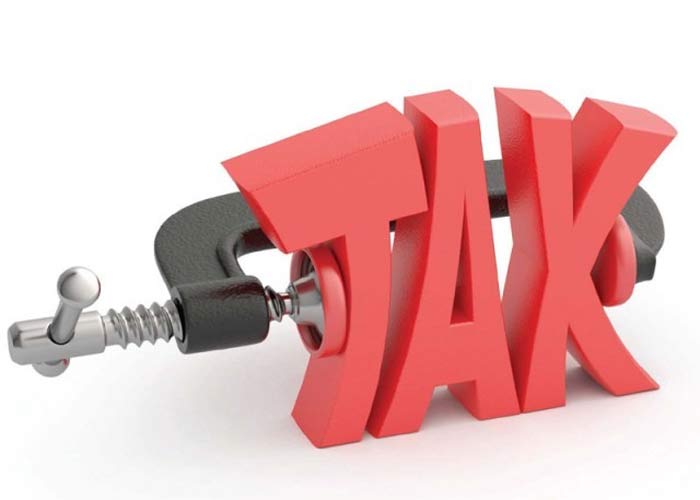- Solid U.S. Job Market May Be Undercutting Trump’s Tax-Cut Case
President Donald Trump’s economic team says it won’t be satisfied until Americans workers earn more — and aggressive tax cuts are essential for those fatter paychecks.
But with unemployment at its lowest rate since before the financial crisis, the world’s biggest economy may already be nearing top speed. That means a big fiscal boost resulting from tax changes could stoke inflation to levels that would prompt the Federal Reserve to raise borrowing rates faster than anticipated. If that happens, Trump’s ambitious growth goals could be jeopardized.
The unemployment rate now sits at 4.4 percent after U.S. employers hired more workers than expected in April. But wages were a soft spot, climbing just 2.5 percent from a year earlier. In an interview Friday with Bloomberg TV after the figures were released, senior White House adviser Gary Cohn said the administration wants to see wages rise faster.
“We’re doing OK, but you see from the data, we’re doing OK with jobs that don’t pay that much,” said Cohn, director of the National Economic Council. “We need to bring back the manufacturing jobs that pay a lot. We need to bring back the service jobs that pay a lot.”
Cohn along with other administration officials say their plans to revise the tax system, cut regulatory red tape and negotiate better trade deals will convince more companies to stay or return to the U.S., spur more higher paying jobs and ultimately increase consumer spending. They say that will help to lift economic growth to 3 percent within two years, a rate not seen on an annual basis in more than a decade.
“So we’re doing a very big tax cut. We need it,” Trump said during an interview with Bloomberg News on May 1. The U.S. economy’s “not growing, it’s not growing at all. We need something — we need a stimulus.”
Stimulating Demand
The question is whether the U.S. economy is even capable of growing at that level without overheating, economists say. And the scant details included in the Trump administration’s tax plan released last week are creating uncertainty about how much growth the cuts can actually generate.
One way to boost growth through tax reform is by stimulating demand, said Douglas Elmendorf, a former official at the Fed and the Congressional Budget Office, who is now dean of Harvard University’s John F. Kennedy School of Government. But demand isn’t nearly as weak as it was in 2009, when the U.S. government rolled out a $787-billion stimulus package, he said.
The economy was also arguably in deeper trouble in 1986, when Ronald Reagan pulled off what some called the biggest overhaul of the U.S. tax system in history. The economy was coming out of a recession only a few years before, and while the jobless rate was coming down from its peak, it was still about 7 percent.
The situation isn’t nearly as dire now. “Any increase in demand spurred by tax changes will be very much offset by tighter monetary policy,” said Elmendorf.
“The other way to spur economic activity and boost jobs is by creating structural economic changes that boost the potential output of the economy, for example by increasing capital investment,” he said. Whether the administration can do that depends on hundreds of specific features of the tax plan that they have not spelled out.
Individual Cuts
Cohn and Treasury Secretary Steven Mnuchin released an outline of Trump’s tax plan on April 26 that borrowed heavily from the president’s campaign themes. The plan would cut tax rates for all businesses to 15 percent. The current corporate tax rate is 35 percent, though many companies trim their bills via various deductions and credits.
For individuals, Trump wants to consolidate the existing seven tax rates to three, with a top rate of 35 percent, down from the current 39.6 percent.
Former U.S. Federal Reserve Chairman Ben Bernanke said earlier this week in an interview on Bloomberg TV that the Trump administration’s plans to cut personal tax rates appear ill-timed and may do little to spur a higher rate of economic growth.
“Why not think about improving the efficiency of the corporate tax code, or doing infrastructure that I think would have more direct effects on supply and potential output than a personal tax cut?” Bernanke said.
Laffer Curve
The Trump tax plan didn’t specify many pay-fors to balance the cuts, but said it would eliminate individual deductions other than those for home-mortgage interest and charitable giving. It also called for eliminating unspecified “tax breaks for special interests.”
Still, the Committee for a Responsible Federal Budget released a rough estimate that Trump’s plan could cost the government $3 trillion to $7 trillion over a decade — potentially “harming economic growth instead of boosting it.” White House Budget Director Mick Mulvaney has dismissed cost estimates of the plan, saying there’s not enough detail for accurate projections.
Sarah Huckabee Sanders, a White House spokeswoman, said Friday during a press briefing that she wasn’t ready to comment on whether the cuts in a tax package should be offset so they don’t add to the deficit.
Economist Arthur Laffer, who advised the Trump campaign, first popularized the notion that tax cuts spur growth in jobs and the economy — and thus pay for themselves — in a 1974 meeting with Ford administration officials. His simple “Laffer Curve” formula, sketched on a paper napkin, jumpstarted the supply-side and trickle-down economics ethos that underpinned the 1986 Reagan tax cuts. The formula didn’t appear to work, as the federal budget deficit soon ballooned.
The administration may also be prevented from reaching its growth goal by demographic shifts that are holding back labor productivity, according to Peterson Institute for International Economics senior fellow William Cline.
“In the ideal world of the supply side economist, the kind of tax cut you want is the kind that would create its own demand immediately and would not be inflationary,” said Cline. “The evidence for that kind of tax cut is not very strong.”


 Billionaire Watch2 weeks ago
Billionaire Watch2 weeks ago
 Startups4 weeks ago
Startups4 weeks ago
 News4 weeks ago
News4 weeks ago
 News4 weeks ago
News4 weeks ago
 Bitcoin4 weeks ago
Bitcoin4 weeks ago
 Naira4 weeks ago
Naira4 weeks ago
 Forex3 weeks ago
Forex3 weeks ago
 Treasury Bills4 weeks ago
Treasury Bills4 weeks ago


























